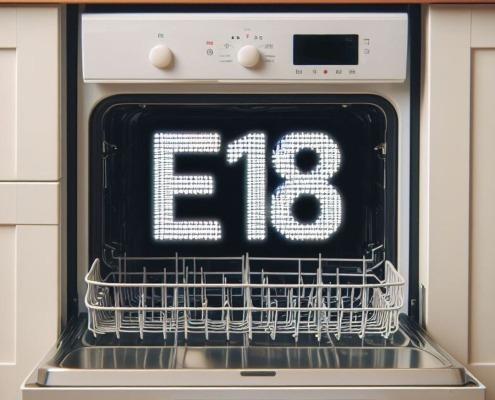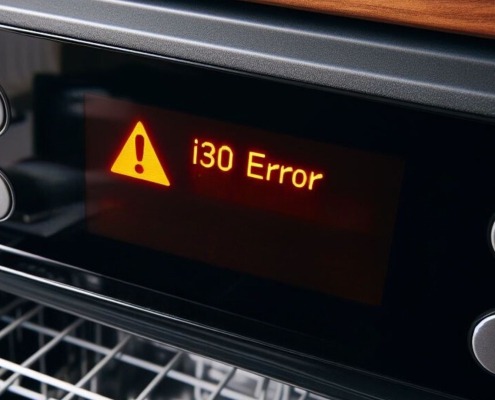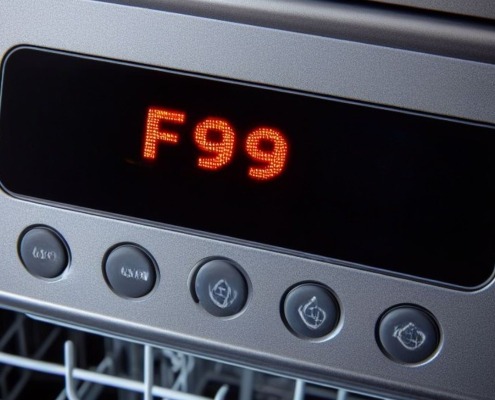How to replace GE dishwasher drain pump assembly WD26X10048
Steven E / Wednesday January 10, 2024
Is your GE dishwasher leaving a pool of water at the bottom after each wash? This frustrating issue is often due to a faulty drain pump, but don’t worry—we’ve got you covered! Watch our step-by-step video tutorial below to learn how to replace it yourself and get your dishwasher back in top shape.
When your GE dishwasher stops draining properly, it may be time to check the drain pump. This component pumps water out during the drain cycle. If it becomes faulty, water can accumulate at the bottom of the tub instead of draining away.
If you need a replacement dishwasher drain pump assembly WD26X10048, you can order it here. If you need other replacement parts for your GE dishwasher, enter your model number at AppliancePartsPros.com to find them.
Why replace the drain pump assembly?
The drain pump assembly is located underneath the dishwasher tub and connects to the sump at the base. When the drain pump is activated, it draws water from the sump and pumps it out through the drain hose during the drain cycle.
If the dishwasher isn’t fully draining and water remains at the bottom at the end of the wash cycle even after checking for clogs, the drain pump is likely broken and needs to be replaced.
What you need
- 5/8-inch open-end wrench
- Flat-blade screwdriver
- Phillips screwdriver
- 5/16-inch nut driver
- 1/4-inch socket wrench
- Replacement drain pump assembly (WD26X10048)
- Towels to catch any water drips
Safety precautions
When working on any appliance, always keep safety first to avoid personal injury or damage to the appliance or parts. Here are some safety tips to keep in mind:
- Always power off and unplug your dishwasher or switch off the circuit breaker before attempting any maintenance or replacement work. This keeps you safe by preventing any risk of electric shock.
- Shut off the hot water supply line.
- If the dishwasher has recently been used, give it plenty of time to cool down before working on it.
- Take your time and don’t rush while working to prevent accidents and personal injuries.
- Work in a well-lit area so you can clearly see and access dishwasher parts.
- Keep your workspace free of clutter and other obstacles. Keep children and pets away from the work area.
- Never work on internal parts with wet hands. Make sure the work area is completely dry.
- Check the user manual to see if there are specific installation or safety instructions related to your dishwasher or replacement part.
- Be gentle when handling or removing parts. Excessive force might damage the dishwasher or cause personal injury.
- Wear insulated work gloves to protect your hands from sharp metal parts and debris.
- When working with wires, avoid touching any exposed wires or terminals. If you need to touch a wire, use a non-conductive tool or wear insulating gloves to prevent electrical shock.
- Consider wearing safety glasses and/or a dust mask when working with chemicals, dust or a large amount of debris to prevent irritation or injury.
READ MORE: Dishwasher Not Fully Cleaning Dishes: Top 5 Reasons & Fixes
Replacement steps
Step 1 – Access the drain pump
- Pull the dishwasher out from the cabinetry.
- Use a flat-blade screwdriver to remove the cover caps from the side mounting screws.
- Use a Phillips screwdriver to remove the two screws securing the dishwasher.
- Carefully slide the unit forward to access the connections in the back.
- Use a 5/8-inch wrench to disconnect the water supply line from the valve.
- Loosen the drain hose clamp with a 5/16-inch nut driver and detach it from the air gap or garbage disposal.
- With the lines disconnected, pull the dishwasher completely out from under the counter.
- Tilt the dishwasher onto its side.
Step 2 – Remove the old drain pump
- Find the drain pump on the underside of the dishwasher.
- Release the electrical connector by prying it off the terminals with a flat-blade screwdriver.
- Use a 5/16-inch nut driver to loosen the hose clamps and detach the drain hose from the pump inlet and outlet.
- Remove the support hook by unscrewing the 1/4-inch screw with a socket wrench.
- Slide the hook bracket out.
- Now use the socket wrench to remove the two 1/4-inch screws holding the counterweight. Set this aside to reuse later.
- Detach the drain pump from the sump.
- Lift the old drain pump up and out of the dishwasher base.
Step 3 – Install the new drain pump
- Attach the counterweight using the two 1/4-inch screws and wrench to provide balance.
- Carefully insert the new drain pump into the sump. Press it firmly into place.
- Reattach the drain hose to the outlet port and tighten the clamp securely with the 5/16-inch nut driver.
- Connect the electrical wiring to the terminals. Make sure the wiring has the correct polarity.
- Clip the connector back into place.
Step 4 – Reinstall the dishwasher
With the new drain pump installed, it’s time to put the dishwasher back into the cabinet.
- Lift the dishwasher and slide it partially under the counter.
- Reach inside to pull the drain hose, water line, and power cord through the opening.
- Push the dishwasher fully into position.
- Reconnect the drain line to the air gap or garbage disposal and tighten the hose clamp.
- Attach the water supply line to the inlet valve and tighten it with the 5/8-inch wrench.
- Use a Philips screwdriver to secure the side mounting screws.
- Snap the cover caps back into place to conceal them.
READ MORE: Dishwasher is Leaking Water: Top 6 Reasons and Fixes
More information
Thanks for reading! We hope this guide helped you replace the drain pump assembly on your GE dishwasher.
If you have any other appliance repair needs or projects, you can find more resources including our DIY blog at AppliancePartsPros.com. There, you can enter your model number to order the exact parts you need. Most orders arrive in two business days.
You can also reach our award-winning customer service team at 1-877-477-7278, chat with a pro on our website, and watch thousands of free video tutorials on our YouTube channel.
With nearly a decade of experience in providing top-notch customer service regarding appliance parts and repair, Steven enjoys sharing practical advice, troubleshooting tips, and interesting information to help readers stay informed.





